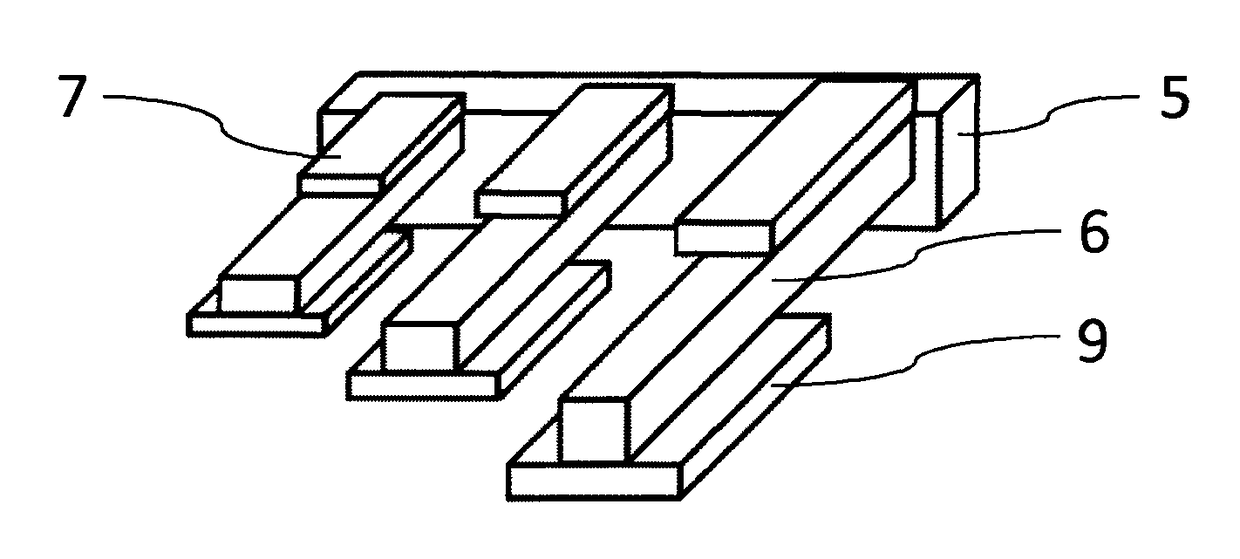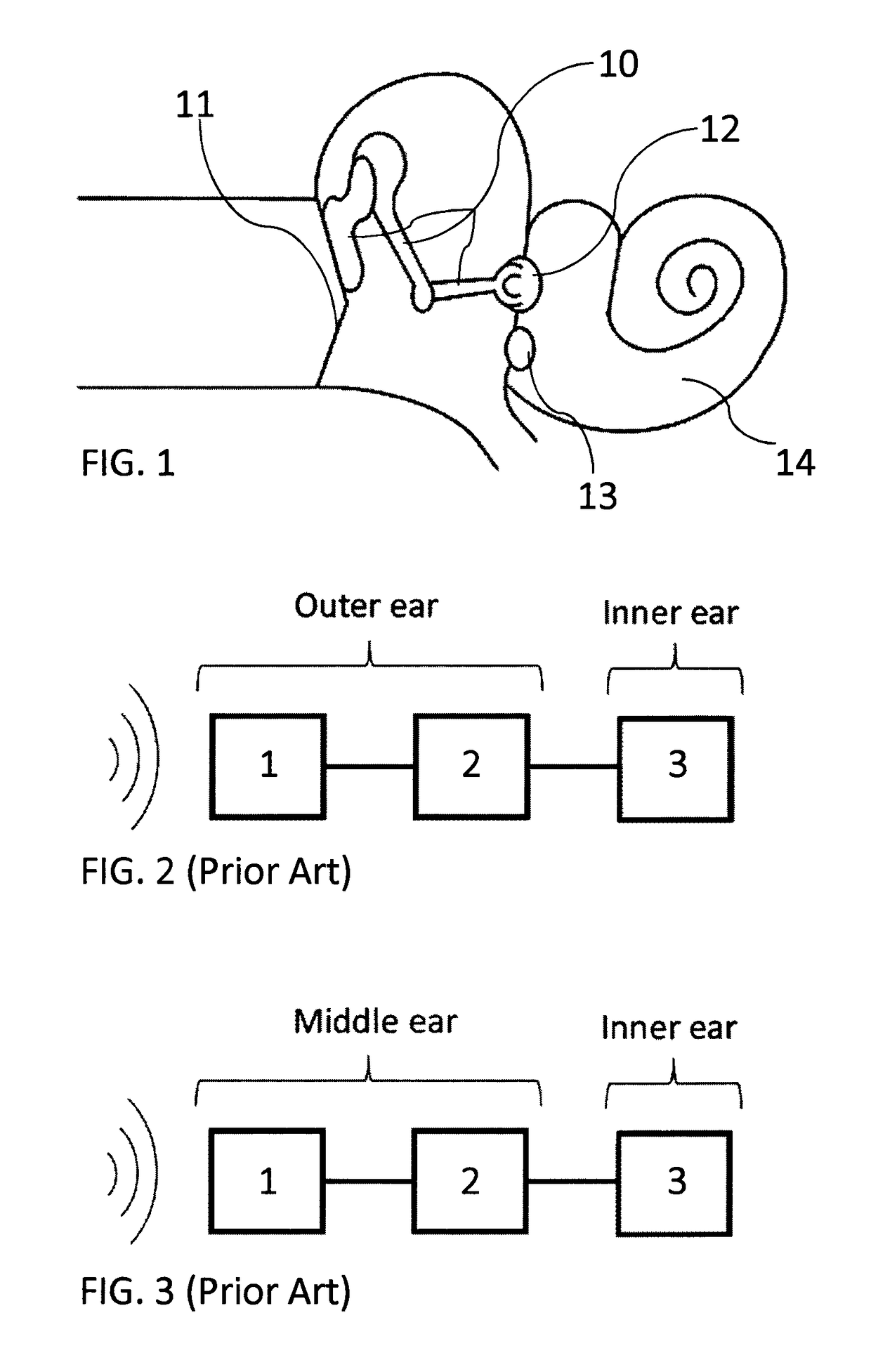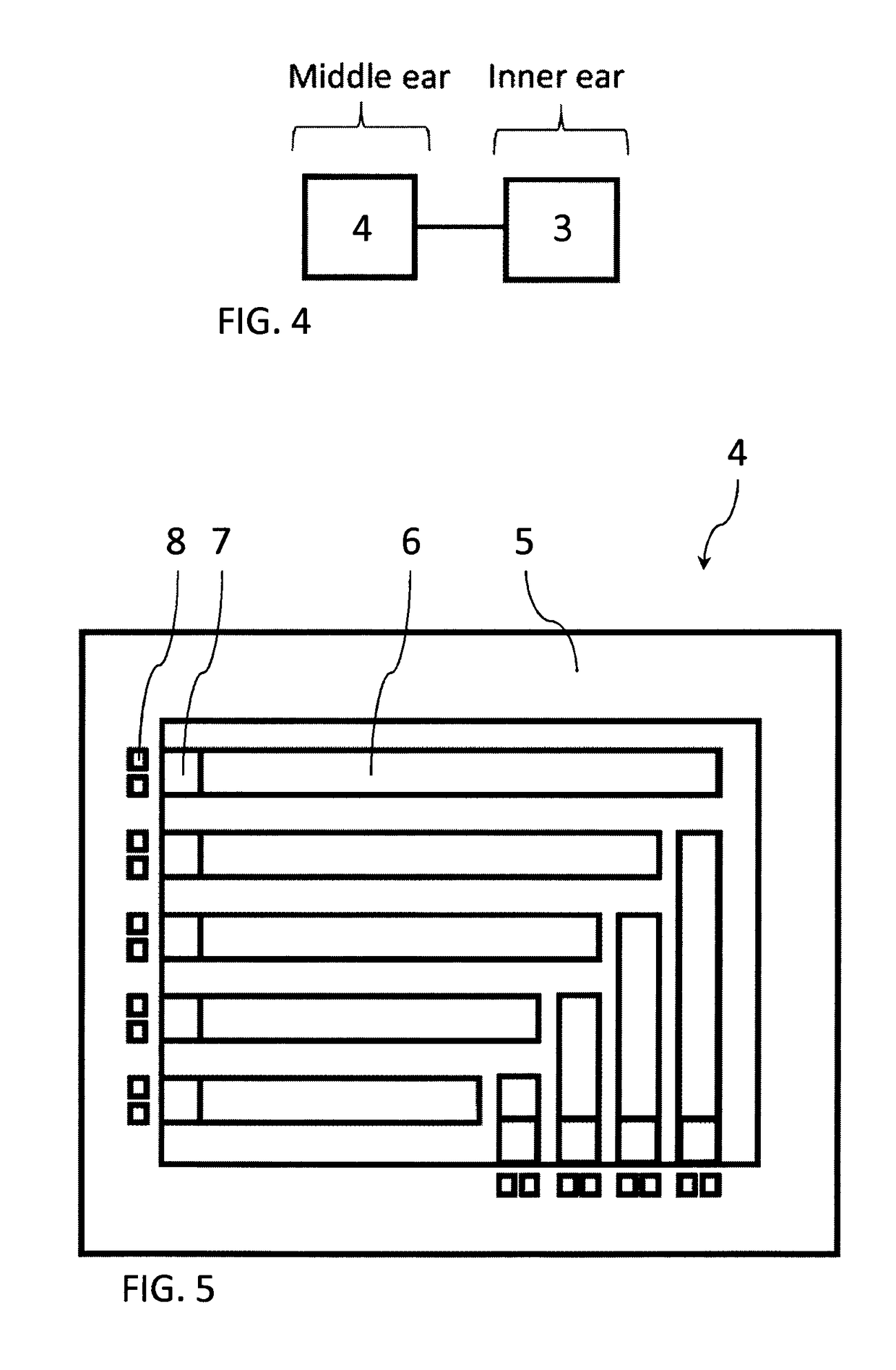Energy harvesting cochlear implant
a cochlear implant and energy harvesting technology, applied in the field of totally implantable cochlear implants, can solve the problems of reducing cosmetic appeal, affecting the hearing of patients, so as to improve the hearing of patients
- Summary
- Abstract
- Description
- Claims
- Application Information
AI Technical Summary
Benefits of technology
Problems solved by technology
Method used
Image
Examples
Embodiment Construction
[0018]In the following detailed description, reference is made to the accompanying drawings such that,
[0019]FIG. 1 is a schematic view of the human ear;
[0020]FIGS. 2 and 3 are schematic views depicting components of a cochlear implant according to the prior art;
[0021]FIG. 4 is a schematic view depicting components of a cochlear implant according to the present invention;
[0022]FIG. 5 depicts a transducer according to the invention;
[0023]FIG. 6a is a side view of a beam of a transducer according to the invention in equilibrium position.
[0024]FIG. 6b is a side view of the beam in FIG. 6a in a disturbed position.
[0025]FIG. 7 depicts a beam of a transducer according to the invention in detail;
[0026]FIG. 8 is a partial view of a transducer according to the invention, depicting exemplary beams in detail;
[0027]FIG. 9 depicts another transducer according to the invention;
[0028]FIG. 10 is a schematic view of a transducer installed on the incus with partially shown electrodes mounted into coch...
PUM
 Login to View More
Login to View More Abstract
Description
Claims
Application Information
 Login to View More
Login to View More - R&D
- Intellectual Property
- Life Sciences
- Materials
- Tech Scout
- Unparalleled Data Quality
- Higher Quality Content
- 60% Fewer Hallucinations
Browse by: Latest US Patents, China's latest patents, Technical Efficacy Thesaurus, Application Domain, Technology Topic, Popular Technical Reports.
© 2025 PatSnap. All rights reserved.Legal|Privacy policy|Modern Slavery Act Transparency Statement|Sitemap|About US| Contact US: help@patsnap.com



